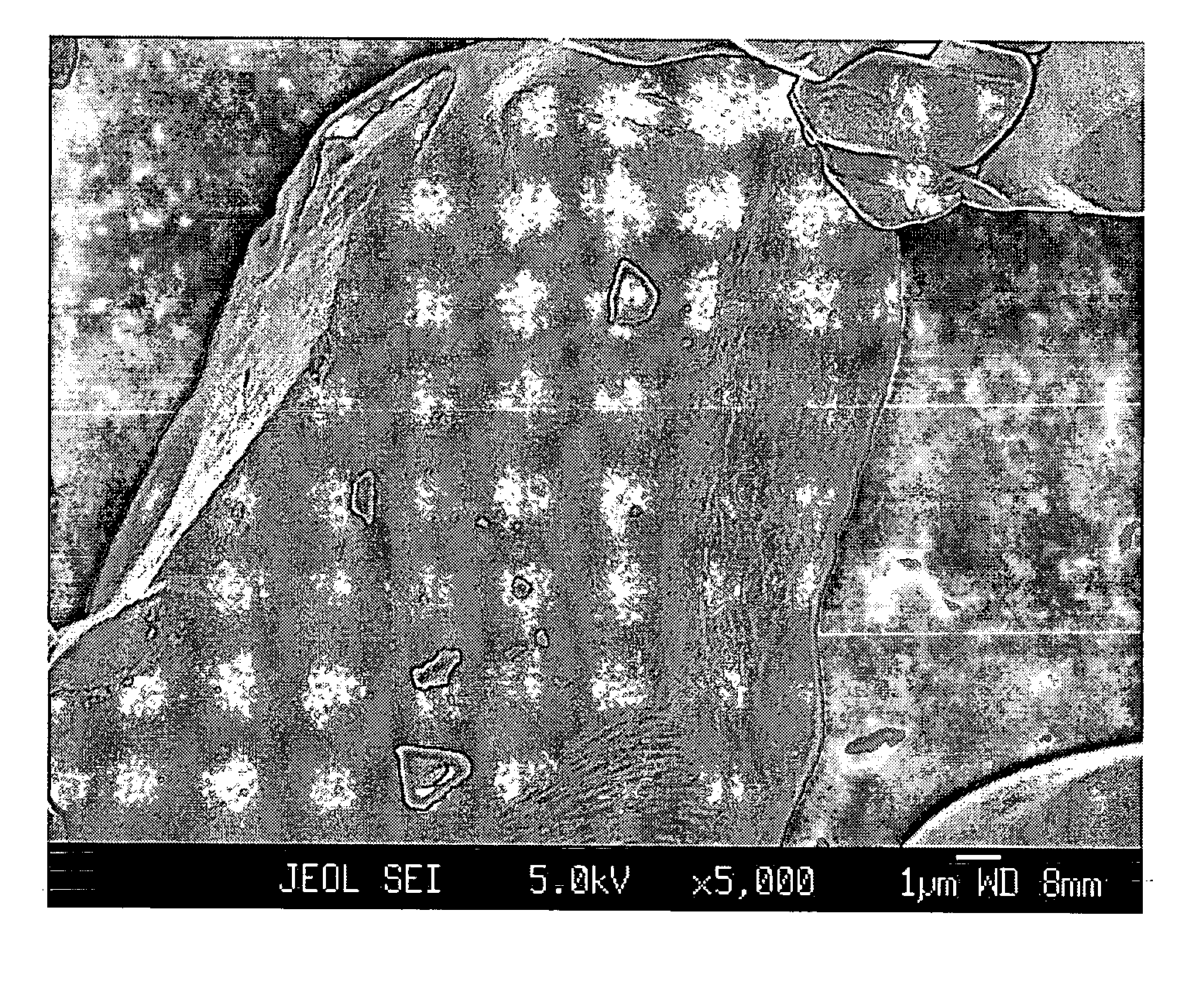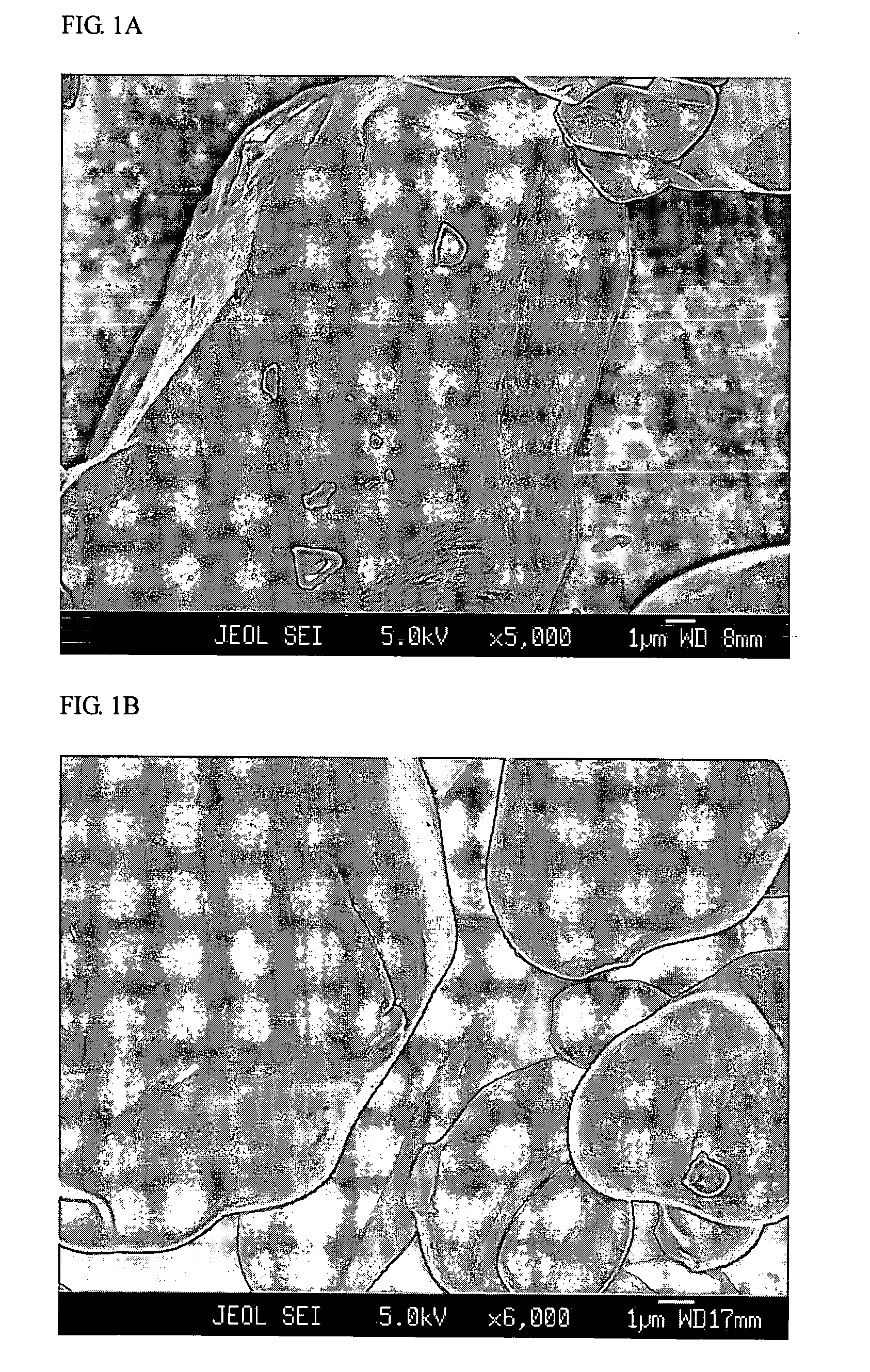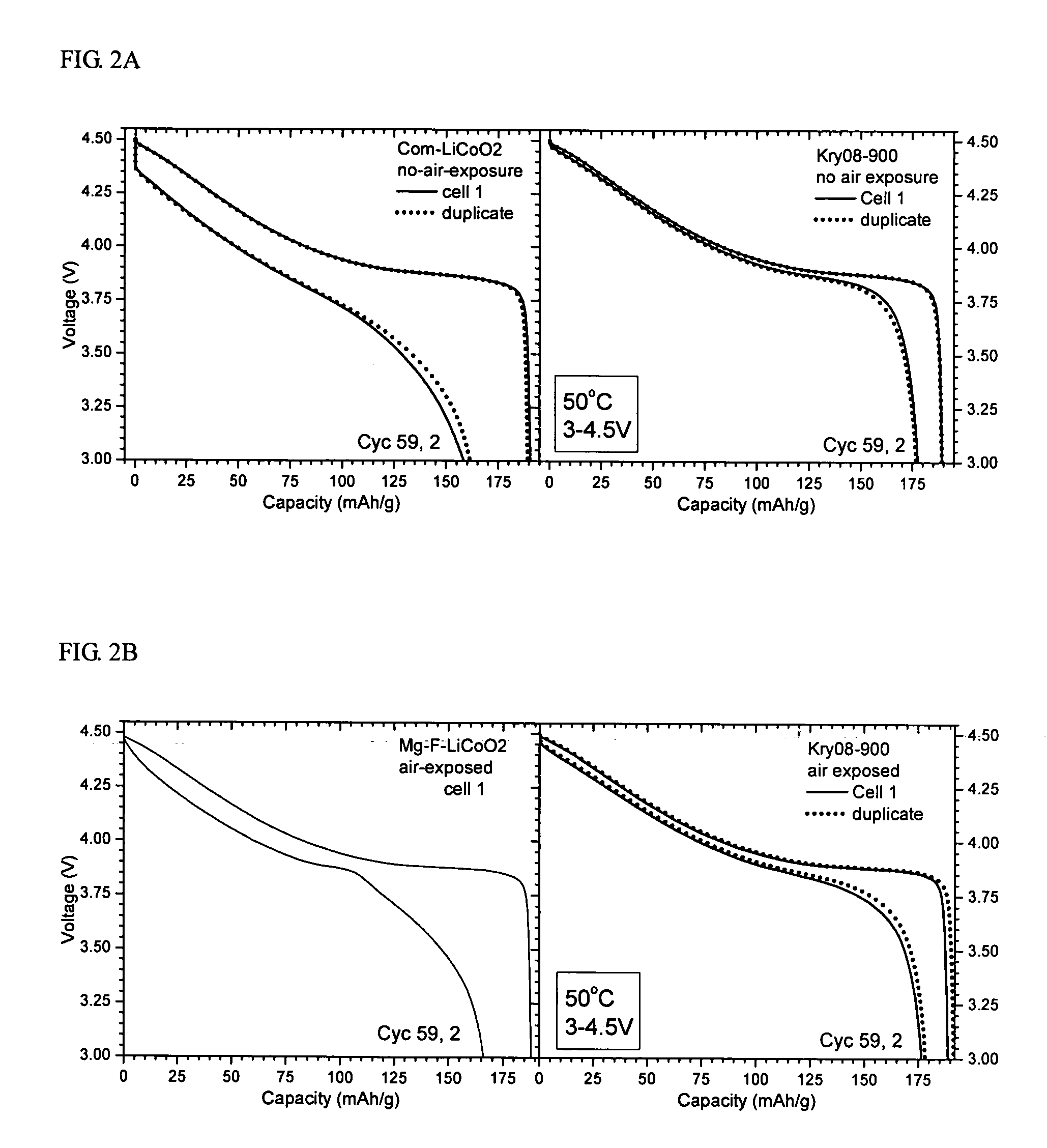Powdered lithium transition metal oxide having doped interface layer and outer layer and method for preparation of the same
a lithium transition metal oxide and interface layer technology, applied in the field of powdered lithium transition metal oxide having doped interface layer and outer layer and method for preparation of the same, can solve the problems of decomposition of electrolyte, excessive gas evolution, and increased problems, and achieve the effect of simple process and use of cathode active materials
- Summary
- Abstract
- Description
- Claims
- Application Information
AI Technical Summary
Benefits of technology
Problems solved by technology
Method used
Image
Examples
example 1
[0053] A commercial LiCoO2 powder of 10-20 μm potato shaped particles, hereinafter referred to as “Com-LiCoO2”, was carefully mixed with a low energy ballmilled mixture (2:1 w / w) of lithium cryolite Li3AlF6 as a primary salt and Li2CO3 as an additional salt. The total content of Al (in the primary salt) per Co (in the LiCoO2) was 0.8% by atoms. Heat treatment was performed at 900° C. in air for 5 hours, then the sample was slowly cooled down, ground and sieved. The sample was designated “Kry08-900”.
[0054] For comparison, Kry08-900 and Com-LiCoO2 were investigated by FESEM, of which micrographs are shown in FIGS. 1A and 1B, respectively. While Com-LiCoO2 has a very smooth surface, Kry08-900 exhibits surface roughness, being evidence for occurrence of a surface reaction.
example 2
[0055] Kry08-900 obtained in Example 1 and Com-LiCoO2 subjected to heat treatment at 900° C. (“heat-treated Com-LiCoO2”) were stored in a closed vial in a dry room. Coin cells (with Li-metal anode) were prepared without exposure of the cathode to moist air.
[0056] The voltage profiles of Kry08-900 and heat-treated Com-LiCoO2 were obtained before and after extended electrochemical cycling at an elevated temperature of 50° C. and high voltage of 3˜4.5 V at C / 5 rate (C1=150 mA / g). Cycling condition: 61 cycles at 50° C., charge C / 5 to 4.5V, and during most of the cycles (56 cycles) the discharge rate was C / 5 to 3.0V. The result is illustrated in FIG. 2A. As seen in FIG. 2A, the modified cathode materials, i.e., Kry08-900 shows greatly improved stability, higher capacity retention, and largely suppressed impedance built-up.
example 3
[0057] Kry08-900, 900° C.-heated Com-LiCoO2 and a commercial Mg—F-containing LiCoO2, as a reference sample, were exposed to humid air, containing a small amount of ethanol vapor, for more than 4 days. Thereafter, coin cells (with Li-metal anode) were prepared using these samples, respectively.
[0058]FIG. 2B shows the voltage profiles obtained before and after extended electrochemical cycling for the air-exposed Kry08-900 and the Mg—F reference sample. The profile of Com-LiCoO2 is not shown because the sample showed serious deterioration. Cycling was performed under the same condition as in Example 2. As seen in FIG. 2B, the modified cathode material, Kry08-900, shows greatly improved stability, higher capacity retention, and suppressed impedance built-up.
PUM
| Property | Measurement | Unit |
|---|---|---|
| melting point | aaaaa | aaaaa |
| temperature | aaaaa | aaaaa |
| charging voltage | aaaaa | aaaaa |
Abstract
Description
Claims
Application Information
 Login to View More
Login to View More - R&D
- Intellectual Property
- Life Sciences
- Materials
- Tech Scout
- Unparalleled Data Quality
- Higher Quality Content
- 60% Fewer Hallucinations
Browse by: Latest US Patents, China's latest patents, Technical Efficacy Thesaurus, Application Domain, Technology Topic, Popular Technical Reports.
© 2025 PatSnap. All rights reserved.Legal|Privacy policy|Modern Slavery Act Transparency Statement|Sitemap|About US| Contact US: help@patsnap.com



